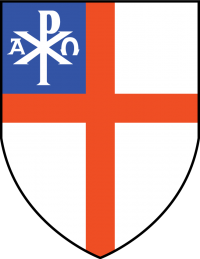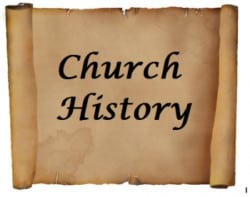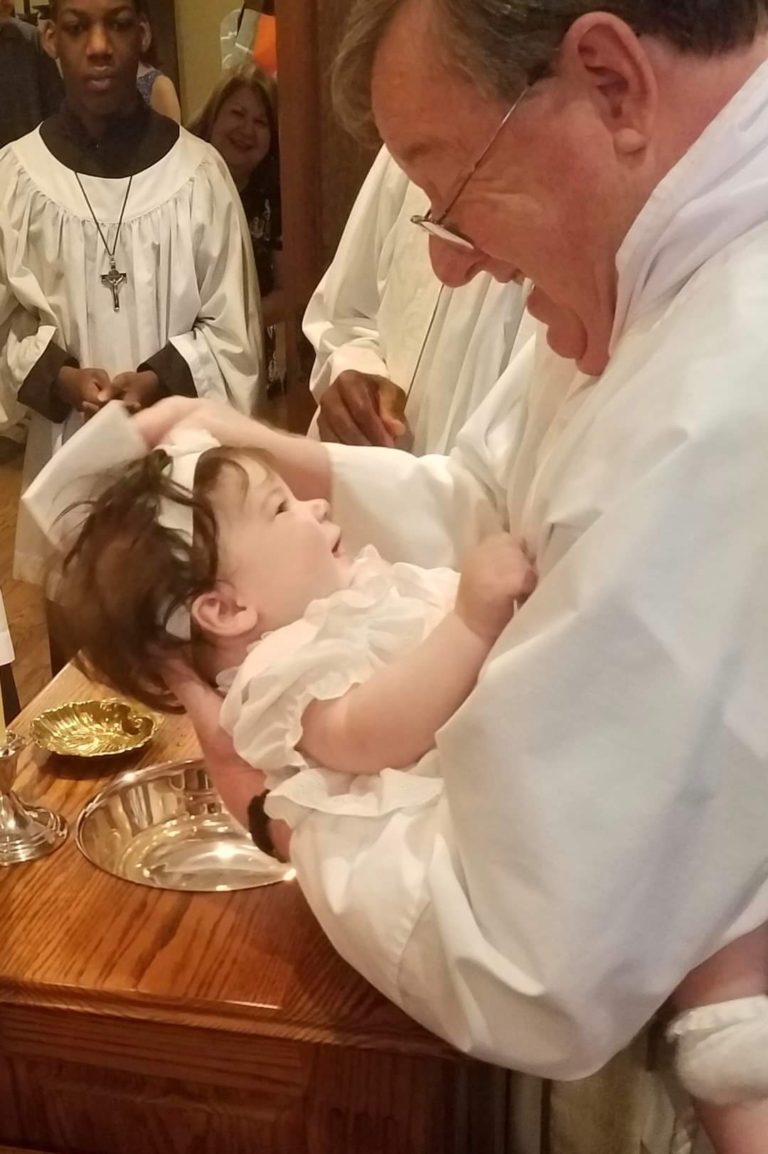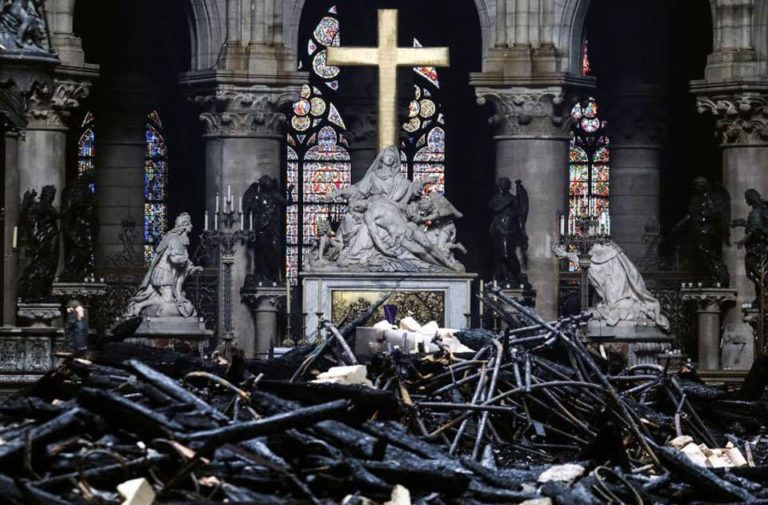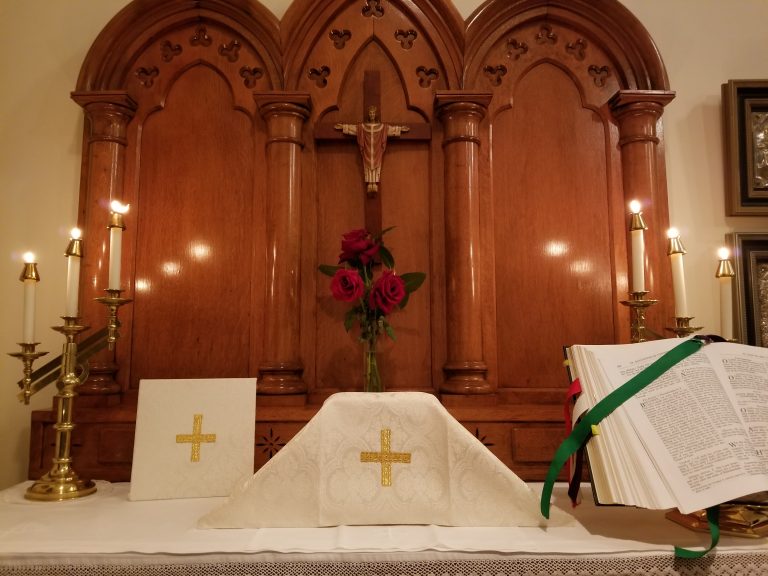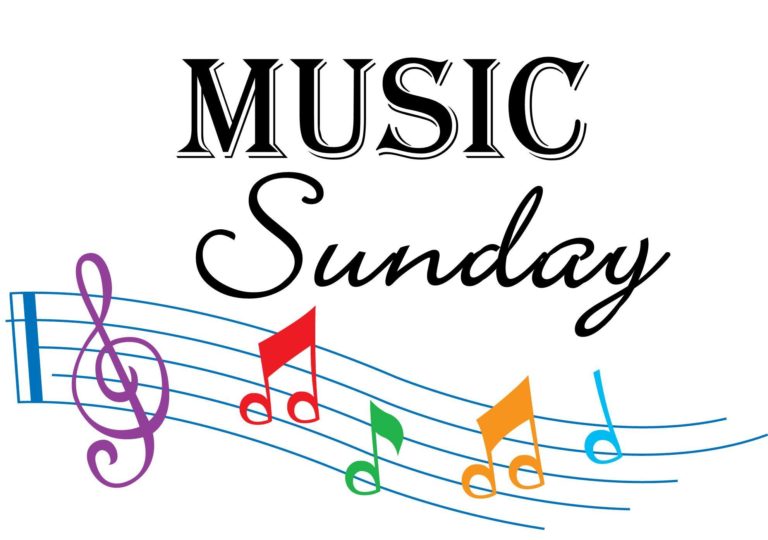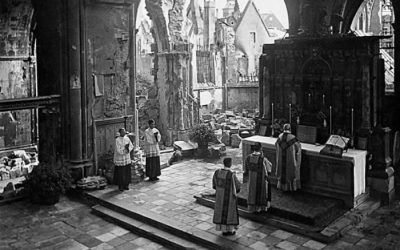Nature of Anglicanism – Wednesday evening study – Part I
Nature of Anglicanism – AN INTRODUCTION – General Overview
Anglicans like most Christians everywhere, follow Jesus Christ, confess the faith of Christ crucified, proclaim his resurrection, and share in his eternal priesthood (after the order of Melchizedek.)[i]
The Anglican Church has its roots in the Church of England and, together with churches in other nations around the world which share the Church of England heritage, and are part of what is called the Anglican Communion. Each national Church within this fellowship is independent of the others in matters of local governance and discipline, but share a common heritage. The shared and once shared common understanding of Christian tradition and worship has recently disappeared as some have changed the historical traditions and teachings into something new.[ii]
Our Province, the Anglican Province in America (APA,) accepts the Holy Scriptures of the Old and New Testaments as “containing all things necessary to salvation,” and as being the rule and ultimate standard of truth and faith. The apocryphal books of the Old Testament – which appear in the ancient Greek translation of the Old Testament, but not in the Hebrew Bible – are used and read in our churches, but are not used as Roman Catholic and Eastern Orthodox Christians, to establish any doctrine. The Apostles’ Creed and the Nicene Creed, ancient summaries of the Christian faith coming to us from the time of the undivided Catholic Church, are received as sufficient statements of the Christian faith. The Apostles’ Creed, used in the Church’s daily worship, is especially associated with the profession of faith made by candidates for Holy Baptism. The Nicene Creed, recited during the Eucharist on feast days, proclaims the Trinitarian faith of Christians throughout the world and throughout the ages.
The sacraments ordained by our Lord Jesus Christ, Baptism and the Lord’s Supper are considered essential to Christian life and worship within Anglican tradition. Holy Baptism can be administered at any age, and the sharing of the sacramental Body and Blood of Christ in the Holy Communion takes place within the service of the Holy Eucharist, the Church’s chief act of worship on Sundays and Holy Days. Other sacramental rites are recognized and used in our Church, but are not considered necessary for all persons in the same way that Baptism and the Eucharist are (these will be discussed later.)
We consider all baptized persons to be members of Christ Church (as we will see when discussing Baptism Rites.) Some Christians are called to the ordained ministries of bishops, priests, and deacons, to serve the Church by teaching, governing, celebrating the sacraments, providing pastoral care, and in servant ministry to the world. This threefold ministry preserves and continues the apostolic ministry empowered by Christ himself, and transmitted in unbroken succession from the time of the Apostles. It is the same ministry shared by the Roman Catholic, Eastern Orthodox.
The Anglican Communion believes that all truth comes from God, and that new knowledge, if true, can only help our understanding of God, as we do not see conflict between “science” and “religion.” In the interpretation of Scripture, we believe that the eternal spiritual truths are present within Scripture as defined by the Church. The Church, under the guidance of the Holy Spirit, is the proper interpreter of Scripture, and this process continues from generation to generation.
Anglicans believe passionately that living a Christian faith must show itself in reaching out to others especially to those who in any way are disadvantaged or oppressed, sick, or in need.[iii] Matthew 25:40 …”Verily I say unto you, Inasmuch as ye have done it unto one of the least of these my brethren, ye have done it unto me. The civil rights movement is a recent example of was such an issue.
The Anglican Communion possesses a deep and rich tradition of Christian spirituality and invites its members to grow in holiness within this tradition according to their individual spiritual personalities.[iv] One can find as deep and rigorous a Christian discipline among us as one can anywhere, but not a “one size fits all” mentality. Among us, discipline is usually not imposed (but it is expected,) and each person, walks on their spiritual journey.[v]
Finally, Anglicans seek to “worship the Lord in the beauty of holiness”. The liturgical worship using the Book of Common Prayer is enriched by architecture, art, music, and whatever things of beauty each local congregation may be able to supply. Beautiful and inspiring worship informs and empowers our service in the world, and that service, laid before the altar, in turn deepens our worship. In all things we seek to glorify God, and to serve Jesus Christ by serving his people in the world.
CHURCH HISTORY
Overview:
Adult inquirers are likely to be familiar with the proposition that the Anglican way is a “via media” or middle way between Catholic and Protestant and aware that the our church stems from the Church of England. Our aim is to build upon these understandings and to deepen them. First, we will discuss the English heritage and Secondly on the American Church. The emphasis is on what is distinctive about Anglicanism, not on what is held in common with all other Christians. The central lesson of both sessions is that the Anglican via media is not just merely a compromise, but a distinctive approach to living the Christian life. Throughout; the recurring themes are those of balancing competing claims and living in the tension between opposites: English and Catholic, Protestant and Catholic, community and individual.[vi]
Anglican theology comes in many flavors: Anglo-Catholic, Evangelical, Liberal, and Broad Church are some of the terms that have been applied to these different perspectives. These different perspectives are all contained within Anglicanism but are mediated by and through common prayer. The first thematic principle for these classes is that for Anglicans – prayer shapes belief: lex orandi, lex credenda (the law of praying is the law of believing.) Anglican prayer is common prayer. The Church for Anglicans is not held together by a common confessional statement or by the theology of a particular leader, but by community in worship according to a Book of Common Prayer “in a language understood of the people.” This uniqueness of the Anglican Church, in that we have no one leader like a Calvin or Luther, but that we follow the faith of the Early Church and Church Fathers. You could say – we have as our Church Leaders – the Church Fathers themselves. In America, its distinctive emphasis is on incarnational theology, centered in the Christian belief that “the word was made flesh and dwelt among us.” This is expressed in the importance of the Sacraments in worship, but also in the Anglican view of nature as revelatory of God and in a positive understanding of the engagement of the Church in this world. Anglicans are not separatists seeking a community of the pure or the saved, but committed participants in the struggles of a messy world that God loves and works to save.
Also, Anglicans value history and historical continuity. Our theology emphasizes continuity with the teachings of the apostles, and our polity stresses the value of the historic episcopate as a symbol of that link down through the centuries. Anglicans do not regard the sixteenth century Protestant Reformation as the beginning of their Church, but see the Church of today as extending in a direct line back to Christ and His Apostles.
ENGLISH HERITAGE
The Ecclesia Anglicana (a medieval Latin Phrase meaning English Church – 1246): Before the Reformation:
General theme: English Christianity existed as a distinctive synthesis of Celtic and Roman patterns with important additions of Benedictine spirituality. The Church in England was a distinct Ecclesia Anglicana long before the Reformation.
- Celtic roots of Christianity in the British Isles
- Augustine of Canterbury and the Council of Whitby
- Benedictine spirituality and monasticism
- Ecclesia Anglicana before Henry VIII
The English Reformation:
General themes: The English Reformation was largely a political matter, and distinct from the Continental Reformation of Lutheran or Calvinist – though affected by both. Elizabeth I was more important to the Anglican via media than Henry VIII. Challenged from both Roman Catholic and Puritan sides, the Church of England was held together by a common English Bible and Prayer Book, a common national pattern of worship and spirituality.
- Henry VIII and the break with Rome:
King Henry King Henry VIII (1491-1547) ruled England for 36 years, presiding over sweeping changes that brought his nation into the Protestant Reformation. He famously married a series of six wives in his search for political alliance, marital bliss and a healthy male heir. His desire to annul his first marriage without papal approval led to the creation of a separate Church of England. Of his marriages, two ended in annulment, two in natural deaths and two with his wives’ beheadings for adultery and treason. His children Edward VI, Mary I, and Elizabeth I, would each take their turn as England’s monarch.
Henry the second son of Henry VII, the first English ruler from the House of Tudor (monarchs who were of the Tudor family.) While his older brother Arthur was being prepared for the throne, Henry was steered toward a church career, with a broad education in theology, music, languages, poetry and sports. Arthur had been betrothed since age 2 to Catherine of Aragon, the daughter of the Spanish rulers Ferdinand and Isabella, and in November of 1501 the teenage couple were married. Months later, Arthur died of a sudden illness. Henry became next in line for the throne and in 1503 was betrothed to his brother’s widow.
Over the next 15 years, while Henry fought three wars with France, Catherine bore him three sons and three daughters, all but one of whom died in infancy. The sole survivor was Mary (later Mary I), born in 1516. Henry issued a book-length attack on Martin Luther’s church reforms that earned him the title “Defender of the Faith” from Pope Leo X.
By the 1520s, Henry had become infatuated with Anne Boleyn, a young woman in his wife’s entourage. He also worried that his marriage to Catherine had been
cursed by God because of the Old Testament ban on marrying the widow of one’s brother. With the backing of the English parliament and clergy, Henry ultimately decided that he didn’t need the pope’s permission to rule on issues affecting the Church of England. In 1533 Henry and Anne Boleyn were married, and their daughter Elizabeth was born. Mary was declared illegitimate and Elizabeth named his heir. England’s monasteries were closed and in most cases sold off to add to Henry’s wealth. In 1538 an order was given to place an English Bible in every church.
After more marriages and more deaths, Henry VIII died on his 56th birthday, January 28, 1547. His 9-year-old son Edward VI succeeded him as king but died six years later. Mary I spent her five-year reign steering England back into the Catholic fold, but Elizabeth I, the longest-reigning of the Tudor monarchs, re-entrenched her father’s religious reforms.
Some believe that Henry VIII began the Church of England and while impossible to say an “exact date” we know that there was a presence of British Bishops at the Council of Arles in 314 A.D. and this shows evidence that there was an established church in England during that time.[vii]
- Thomas Cranmer and The Book of Common Prayer, 1549
Thomas Cranmer: (1489-1556) was consecrated Abp. of Canterbury in 1533 and was King Henry’s chief instrument in overthrowing the Papal supremacy in England. He annulled Catherine’s marriage to Henry and three years later pronounced a similar judgment on the King’s marriage with Anne Boleyn. He also married Henry to and divorced him from Anne of Cleves. He was partly responsible for the Ten Articles and the dissemination of the Bible in the vernacular. He was burnt at the stake in Oxford on 21 March 1556. The Church of England has much to owe to Cranmer – especially the masterly English style of its liturgy.
The First Book of Common Prayer: Although a formal break with the Papacy came about during the time of Henry VIII, the Church of England continued to use liturgies in Latin throughout his reign, just as it always had. However, once Henry died and the young Edward VI attained the throne in 1547, the stage was set for some very significant changes in the religious life of the country. And so a consultation of bishops met and produced the first Book of Common Prayer. It is generally assumed that this book is largely the work of Archbishop Thomas Cranmer, but, as no records of the development of the prayer book exist, this cannot be definitively determined.
This Book of Common Prayer was not created in a vacuum, but derives from several sources.
First and foremost was the Sarum Rite, or the Latin liturgy developed in Salisbury in the thirteenth century, and widely used in England. Two other influences were a reformed Roman Breviary of the Spanish Cardinal Quiñones, and a book on doctrine and liturgy by Hermann von Wied, Archbishop of Cologne. This prayer book was in use only for three years, until the extensive revision of 1552. However, much of its tradition and language remains in the prayer books of today, as may be seen by even a cursory examination of the text.
1662 Book of Common Prayer: The new Preface written by Bishop Sanderson spoke of the struggle of the times, of the need to “keep the mean”, “moderation”. Three aims are stated. One, to preserve peace and unity in the church. Two, to promote piety and devotion. Three, to restrict the quarrelsome, those who would promote their own form. The book had a new calendar and rubrics and it utilized the 1611 Authorized Version of the Bible. It added Prayers for those at Sea which was a puritan initiative which reflects the desire to address the “struggle of the times” as both sides had victories in the new work. The 1662 Book of Common Prayer is a permanent feature of the Church of England’s worship.
- From Catholic to Protestant and back again: Henry VIII (to Catholic); Edward (to Protestant); Mary (to Catholic).
- Mary Tudor: England’s first female monarch, Mary I (1516-1558) ruled for just five years. The only surviving child of Henry VIII and his first wife, Catherine of Aragon, Mary took the throne after the brief reign of her half-brother, Edward VI. She sought to return England to the Catholic Church and stirred rebellions by marrying a Spanish Habsburg prince. But she is most remembered for burning nearly 300 English Protestants at the stake for heresy, which earned her the nickname “Bloody Mary.”
After taking the throne her ruling council was a mix of Protestants and Catholics, but as her reign progressed she grew more and more fervent in her desire to restore English Catholicism. Mary soon moved from simply reversing her father’s and Edward’s anti-Catholic policies to actively persecuting Protestants. In 1555 she revived England’s heresy laws and began burning offenders at the stake, starting with her father’s longtime advisor Thomas Cranmer, the archbishop of Canterbury. Almost 300 convicted heretics, mostly common citizens, were burned. Dozens more died in prison, and some 800 fled to Protestant strongholds in Germany and Geneva, from whence they would later import the Calvinist tenants of English Puritanism.
Of note – sometimes confused:
Mary, Queen of Scots: (1542-1587) – was one of the most fascinating and controversial monarchs of 16th century Europe. At one time, she claimed the crowns of four nations – Scotland, France, England and Ireland. Her physical beauty and kind heart were acknowledged even by her enemies. Yet she lacked the political skills to rule successfully in Scotland. Her second marriage was unpopular and ended in murder and scandal; her third was even less popular and ended in forced abdication in favor of her infant son. She fled to England in 1568, hoping for the help of her cousin, Elizabeth I. Her presence was dangerous for the English queen, who feared Catholic plotting on Mary’s behalf. The two queens never met and Mary remained imprisoned for the next nineteen years. She was executed in 1587, only forty-four years old. By orders of the English government, all of her possessions were burned. In 1603, upon Elizabeth’s death, Mary’s son became king of England as James I.
- Elizabeth I and the Anglican Settlement: Elizabeth I: (1553-1603) Queen of England from 1558, daughter of Henry VIII and Anne Boleyn. The long reign of Elizabeth, who became known as the “Virgin Queen” for her reluctance to endanger her authority through marriage, coincided with the flowering of the English Renaissance, associated with such renowned authors as William Shakespeare. By her death in 1603, England had become a major world power in every respect, and Queen Elizabeth I passed into history as one of England’s greatest monarchs.
In Parliament of 1559 she sought to achieve a royal supremacy and the restoration of the 1552 Book of Common Prayer which made a few concessions to Catholics. She reintroduced a crucifix in her chapel, contemplated a prohibition of clerical marriage, tried to insist on traditional vestments and probably had some last minute modification the Thirty Nine Articles of Religion in 1563.
Although political realities often made her cautious, Elizabeth posed as the restorer of the Gospel and the patron of Protestant as she sent military aid to Protestant rebels in Scotland in 1560, France in 1562, and the Netherlands in 1585. Elizabeth’s collection of private prayers suggest a genuine Protestant piety and a commitment to the doctrine of justification by faith alone. From 1583 Elizabeth turned more decisively against English Catholics, partly for fear of plots. Persecution of Catholics was vigorous in 1585-1591 and in 1587 Elizabeth reluctantly allowed the execution of her cousin Mary Stuart (Mary Queen of Scots) who had been a focus of Catholic planning. Her image as Protestant “protect-ress” helped her to overcome suspicion of female rule, and made anti-popery a powerful national ideology.
The Marian (followers of Mary) exiles had an impact upon the Elizabethan Church. The Marian Exiles were English Protestants who fled to the continent during the reign of Queen Mary I. They settled chiefly in Protestant countries such as the Netherlands, Switzerland and Germany, but also in France and Italy. Elizabeth had been raised as a Protestant in the household of Catherine Parr. During the first year of Elizabeth’s reign many of the Marian exiles returned to England. A compromise religious position established in 1559 is now known as the Elizabethan Religious Settlement. It attempted to make England Protestant without totally alienating the portion of the population that had supported Catholicism under Mary. While the Elizabethan Settlement proved generally acceptable, there remained minorities who were dissatisfied with the state of the Church of England. In particular cry for “further reform” in the 1560s was the basis of what is now known as the Puritan Movement.
- Martin Luther: (1483–1546) — In 1517, nails his 95 Theses onto a Wittenberg Church door. These theses were Latin propositions opposing the manner in which indulgences (release from the temporal penalties for sin through the payment of money) were being sold in order to raise money for the building of Saint Peter’s in Rome.
- Diet of Worms (Imperial council): In 1521 was made famous by Martin Luther’s appearance to respond to charges of heresy. Pope Leo X had condemned 41 propositions of Luther’s, but he also had given Luther time to recant. Because Luther refused to recant, he was excommunicated on January 3, 1521. While the emperor should then have arrested and executed Luther, the intervention of Luther’s ruler, Elector Frederick III the Wise, brought the decision that he would appear for a hearing at the Diet under the emperor’s safe-conduct. On April 17, 1521, Luther went before the Diet for the first time. In response to questioning, he admitted that the books displayed before the court were his, but, when asked to repudiate them, he asked for time to consider the question. The next day, again before the assembled Diet, Luther refused to repudiate his works unless convinced of error by Scripture or by reason. Otherwise, he stated, his conscience was bound by the Word of God. According to tradition, he said, “Here I stand; I can do no other.” Disorder broke out at the conclusion of Luther’s refusal to recant, and the emperor dismissed the Diet for the day proclaiming Luther to be an heretic and banned the reading or possession of his writings.
- Zwingli: (1484–1531) – A Swiss theologian and leader of early Reformation movements in Switzerland. Vigorously denounces the sale of indulgences in 1518. He and Luther had differences over the Eucharist and were unable to resolve their differences in Marburg.
- John Calvin: (1509-1564) – A Genevan Reformer who in 1536 published his first edition of The Institution of the Christian Religion (Institutes) which was a defense of Reformation beliefs. After being ran out of Geneva, he was then invited back in 1541. Calvin spent much time trying to settle the differences within the Protestant movement and was a leading proponent of predestination and reprobation
- The Caroline Divines: A school of Anglican preachers and theologians living under King Charles I, the Interregnum and Charles II are known collectively as the Caroline Divines. During the “reforming” era, the Caroline Divines sought to return the Church to its original position during the 1st, 2nd, and 3rd centuries. Selected writings of the Caroline Divines were collected by adherents of the Oxford Movement and published in the extensive (and never completed) Library of Anglo-Catholic Theology. The key figures of the Divines were: Richard Allestree, Lancelot Andrewes, Ralph Brownrigg, King Charles the Martyr, Brian Duppa, Mark Frank, Henry Hammond, George Herbert, Peter Heylyn, William Laud, Robert Sanderson, Jeremy Taylor, Izaak Walton.
- Richard Hooker: Scripture, Tradition, & Reason: the via media
- Bible in English: John Wycliffe: (1330-1384) He attacked what he saw as corruptions within the church, including the sale of indulgences, pilgrimages, the excessive veneration of saints, and the low moral and intellectual standards of ordained priests. Wycliffe also repudiated the doctrine of transubstantiation, held that the Bible was the sole standard of Christian doctrine, and argued that the authority of the Pope was not grounded in Scripture. Some of Wycliffe’s early followers translated the Bible into English, while later followers, known as Lollards, held that the Bible was the sole authority and that Christians were called upon to interpret the Bible for themselves.
[i] The Christian faith, as explained by Andrewes, is “one cannon given of God, two testaments, three symbols (Apostles’, Athanasian, and Nicene creeds), the four first councils of Nicaea I: 325; Constantinople I: 381; Ephesus: 431; Chalcedon: 451, and first five centuries and the series of Fathers therein.”
[ii] During the 1960’s, 1970’s, 1980’s until the present, Episcopalians began to make unscriptural decisions and promote unscriptural positions. First, they changed the Prayer Book and thus they changed many of the prayers. Then changed, without the full communion support – basically “on their own” a two thousand year tradition as they ordained women as clergy. Just like the Early Church, some Episcopalians began to teach things that are contrary to the historical teachings of the Church. Some said that Jesus is not God or that He did not rise from the dead. Others endorsed positions that are contrary to Scripture (homosexuality and abortion.)
Many concerned Episcopalians began to gather in various US cities during the 1960’s and 1970’s. They felt threatened that they would not longer to pray under a valid Bishop and be given priest which were not of the male character of Christ and that their “priest” would begin to teach things that are not part of the Traditional Faith.
Several of these people decided that in order to protect the teaching and worship of the Church, they would ask Bishops from all over the world to provide them with bishops and priests of their own as they began to set up small churches. Just as the English under Henry VIII, they did not claim to set up a new church from scratch. They received Holy Orders from bishops who succeeded the Apostles, and they taught from the Bible using the Book of Common Prayer as their guide. God provided for His Church.
These brave Anglicans were pioneers and set an example for others around the world who felt their Anglican Heritage was being changed and/or discarded. They were called “Traditionalist” and “Continuers.” St. Michael’s is one of the churches. It is a parish of the Diocese of the Eastern United States, which is under the jurisdiction of the Anglican Province in America. History; The present structure of the Anglican Province of America (APA) was erected in 1998, constituted by the Diocese of the Eastern United States and the Missionary District of the West. In 2000, the Missionary District of the West became a Diocese in its own right and in the 2008, the Diocese of Mid-America was erected in the central U.S. from the non-geographical Diocese of St. Augustine, which had come into union with the APA in 2004. The history of the APA, however, stretches back to 1968 with the founding of the American Episcopal Church (AEC) in response to the heretical teachings of Episcopal Bishop James Pike, the Social Gospel Movement in the mainline Protestant churches, and the liturgical movement spawned by the dramatic liturgical revisions of Vatican II. Our Diocese of the Eastern United States is the same diocese first erected in the old AEC, the first of the modern so-called “Continuing Churches.”
In 2017 our Province signed a Letter of Unity with Anglican Catholic Church, the Anglican Church in America, and the Diocese of the Holy Cross.
[iii] “To make religion nothing but an auricular profession, a matter of ease, a mere sedentary thing, and ourselves merely passive in it; sit still, and hear a Sermon and two Anthems, and be saved, as if by the act of the choir, or of the preacher, we should so be, (for these by their acts,) and we do nothing ourselves, but sit and suffer, without so much as anything done by us, any effundan (pouring) on our parts at all; not so much as this, of calling on the Name of the Lord.”
Religion to Andrewes was not just something “inward” but “outward” as well. The visible church was something very real to Andrewes as it had represented the Church of Christ from its beginning, having continuity with apostolic times which had been visible throughout its history. Thus he would strive to establish the English Church upon the ground of scripture and the early church. Andrewes had a nostalgic longing for the days of Christian unity and had an understanding of the Protestant Movement within the Church of England as he wrote to Bellarmine, “The people of the reformed churches have suffered no shipwreck of the faith, they reject no creed of the old Church, they admit all.”
Having determined the Christian Faith by examining the Canonized Scripture, the early Church Fathers, and the first four ecumenical councils, he undertook the task of formalizing the patterns which he believed should prevail in the English Church. This meant that he must defend the English Church against the onslaught of Roman Catholicism, and he also must bring his defense against some of the Puritan tendencies within the Church itself. With the Puritans it could be argued that Andrewes had more of a problem with their form of government than with the essentials of religion. As there was order and structure in God’s Creation, Andrewes believed that structure and order were proper for Christ’s Church. As he observed the many changes that the Puritan’s brought to the structure of church government, which was different than the English Church, he viewed the changes as disorder and the undoing of the current church in England. This meant that he had to face the problem, as far as the English Church was concerned; of propagating the idea of the continuity of a Catholic early tradition in the Church despite the break occasioned by Henry and later Elizabeth, as he had to promote the idea of Catholicism that was episcopal, but not papal. At the same time Andrewes sought to reduce the Puritan tone of earlier Elizabethan Anglicanism. His desire was to take the historical legitimacy of both by taking the same road of the early Church.
[iv] Roman charge from Cardinal Bellermine in his Responsio ad librum: Triplici nodo, triplex cuneus (1608) that a man cannot be called “Catholic” who rejects transubstantiation, the temporal claims of the papacy, and the invocation of saints. This charge opened the door for Andrewes to enter into the apologetic field in defense of the Church of England. In doing so, he continues a theme of walking a path which the early fathers of the church traveled. He sought no new doctrines or ways of worship as he responded:
“Much detriment has the catholic faith suffered at your (Church of Rome) hands; much filth has it contracted, much from which it is no disgrace to us that we revolt…This filth has lately, in some parts of the world, been washed off, and the form…originally possessed has been restored. To this faith we cling as reformed; not to your deformation of it. Our religion you miscall modern sectarian opinions. I tell you if they are modern, they are not ours; our appeal is to antiquity yea, even to the most extreme antiquity. We do not innovate; it may be we renovate what was customary with those same ancients, but with you has disappeared in novelties…Subjection to Rome, dependence on Rome this is the sum of your religion.”
He defended the church against Roman influence as well as the Puritan strain of worship within the Church. Condemning responses to the Roman Church, he referenced the past to determine the future; however, his attitude towards the Puritans was gentler:
“Andrewes had no liking for compulsion; he trusted mainly to the power of persuasion to win and control the unruly and excited spirits about him. In one of his sermons he draws a beautiful picture of the true prince who “leads” his people, and does not “drag” them…Our guiding must be mild and gentle…Laud represents another method, that of legal coercion…Andrewes was in favor of gentle and gradual…he trusted to the educational influence, which indeed was already very marked…more belief in human nature than Laud, and it was an evil day for the Church when his presence was withdrawn.”
In seeking to remain faithful to early church tradition, he followed a road already traveled within both testaments as he looked for direction. The words from the Old Testament would be a guide to him:
Hb 2:20, “The Lord is in his holy temple; let all the earth keep silence before him,” and Ps 96:9, “O worship the Lord in the beauty of holiness; let: fear before him, all the earth,” and of the New Testament Jn 4:23, “The hour cometh, and now is, when the true worshippers shall worship the Father in spirit and truth: for the Father seeketh such to worship him.”
[v] Nicolas Lossky, Lancelot Andrewes the Preacher (1555-1626): The Origins of the Mystical Theology of the Church of England, (Oxford: Clarendon Press, 1991), 6. “But if, on the other hand, to make a theology means to make more and more truly one’s own, by experience, the mystery of the relationship of God to man that has been traditionally lived by the Church, then originality will consist not so much in innovation, as enabling a whole era to grasp the genuine essence of the Christian message. In fact, the more the theologian penetrates into the heart of the mystery, the more his teaching will be personal, and consequently original.
[vi] Example is the “real presence” doctrine of the Eucharist. The difference between Roman Catholic Church doctrine of transubstantiation and the “real presence” view of the Church of England. Andrewes believed transubstantiation could not be an expression of faith, as it was a metaphysical explanation of how Christ was truly present within the Eucharist. He would write to Cardinal Bellarmine that English Christians believed no less than Roman Catholics that the Eucharistic presence was indeed real, but that they do not define the mode of that presence.
“Christ said “this is my body.” He did not say “this is my body in this way”. We are in agreement with you as to the end; the whole controversy is as to the method. As to the “This”, we hold with firm faith that it is. As to the “this is in this way”, (namely by the Transubstantiation of the bread into the body), as to the method whereby it happens that it is, by means of In or With or Under or By transition there is no word expressed [in Scripture]. And because there is no word, we rightly make it not of faith; we place it perhaps among the theories of the school, but not among the articles of the faith…We believe no less than you that the presence is real. Concerning the method of the presence, we define nothing rashly, and I add, we do not anxiously inquire, any more than how the blood of Christ washes us in Baptism, any more than how the human and divine natures are united in one Person in the Incarnation of Christ.”
[vii] Bede: Ecclesiastical History of the English People; P.51 – “In fertile Britain’s land was noble Alban born… Alban, yet a pagan (286AD) gave shelter to a Christian Priest fleeing from his pursuers. And when he observed this man’s unbroken activity of prayer and vigil, he was suddenly touched by the grace of God and began to follow the priest’s example of faith and devotion. … The priest lay hidden in Alban’s house … orders given to make a thorough search, and when they arrived at Alban’s house, holy Alban, wearing the priest’s long cloak, at once surrendered himself in the place of his guest and teacher, and was led bound before the judge. (Page 52 tells part of story.)
